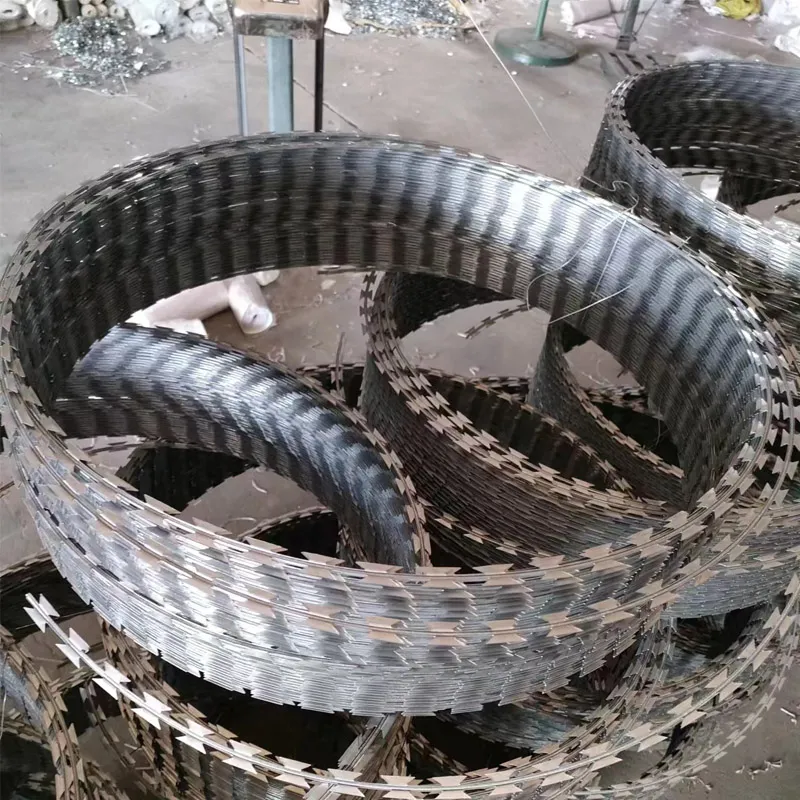Déc . 06, 2024 22:02 Back to list
barbed wire fences
The Unseen Impact of Barbed Wire Fences
Barbed wire fences have long been instrumental in shaping landscapes, societies, and economies across the globe. Originally patented in the late 19th century, this simple yet effective invention revolutionized agricultural practices and land management. While at first glance, barbed wire might seem like a mundane agricultural tool, its impact reaches far deeper into our environmental, social, and economic frameworks.
At its core, barbed wire fencing serves a critical function in delineating property boundaries. For farmers and ranchers, it provides a clear demarcation of land ownership, preventing livestock from straying and protecting crops from wildlife. The introduction of barbed wire enabled ranchers to manage vast tracts of land that were previously unmanageable. Before its invention, fencing was cumbersome and costly, often involving wooden posts and rails which were not only expensive but also lacking in durability. Barbed wire provided an affordable and efficient solution, allowing for more extensive land use and thereby enhancing agricultural productivity.
However, the benefits of barbed wire fences extend beyond mere property delineation. They have played an important role in the history of the American West during the late 1800s. The expansion of ranching and agriculture, alongside the westward push of settlers, placed immense pressure on the natural environment. Barbed wire became symbolic of this transformation; it represented the closing off of open ranges and the establishment of private land ownership in a previously free and unfenced landscape. This change bore significant repercussions for indigenous peoples and wildlife, as traditional migration paths were obstructed and ecosystems were altered.
barbed wire fences

Despite its practicality, barbed wire has not been without controversy. The barriers that it creates can have detrimental effects on wildlife. Many species, particularly those that are migratory or require large territories, find their movements hindered by fences. The phrase fencing out describes how animals are effectively excluded from their natural habitats as a result of these structures. Conservationists argue that while barbed wire is essential for agricultural and property management, it must be designed and installed with ecological considerations in mind. Solutions such as wildlife corridors and modified fencing designs are gaining traction as ways to mitigate the harmful consequences on wildlife populations.
Socially, barbed wire fences have often been used in more nefarious contexts, serving as instruments of segregation and exclusion. Throughout history, barbed wire has symbolized oppression and confinement. During World War I and II, it was used to create internment camps and restrict the movement of individuals deemed undesirable. The imagery of barbed wire fences surrounding these camps evokes strong feelings of fear, imprisonment, and violation of human rights. Thus, while barbed wire may be a tool for property protection and livestock management in agriculture, it also serves as a potent reminder of humanity's often dark history of exclusion and control.
In recent years, the debates surrounding barbed wire fences have intensified in the context of immigration. As countries grapple with issues of border control and security, barbed wire has found new life in national border policies. From the U.S.-Mexico border to the barriers erected in Europe, barbed wire represents a physical manifestation of political ideologies and governmental strategies aimed at controlling migration. These fences often ignite heated discussions about human rights, the treatment of refugees, and national security. The visual dichotomy of barbed wire—symbolizing both protection and restriction—highlights the complexities associated with border management.
In conclusion, the impact of barbed wire fences extends far beyond their physical presence in the landscape. Serving as a tool for agricultural optimization, wildlife management, and even a symbol of societal division, barbed wire encapsulates significant historical and contemporary narratives. As we move forward, it is crucial to balance the practical benefits of these fences with the ethical implications surrounding their use. By considering innovative designs and policies, we can harness the utility of barbed wire while minimizing its negative consequences on both nature and society. The legacy of barbed wire thus becomes not just one of utility, but a reflection of humanity's ongoing struggle with boundaries—both of land and of spirit.
-
Reliable Nails for Every Construction Project
NewsJun.10,2025
-
Reliable Iron Nails for Every Project
NewsJun.10,2025
-
Razor Wire Solutions for Enhanced Security
NewsJun.10,2025
-
Hydraulic Hose Ferrule Fittings: Key to a Strong Hydraulic System
NewsJun.10,2025
-
Field Fencing: Secure Your Property with the Best Solutions
NewsJun.10,2025
-
Euro Fences: The Ultimate Choice for Security and Style
NewsJun.10,2025









